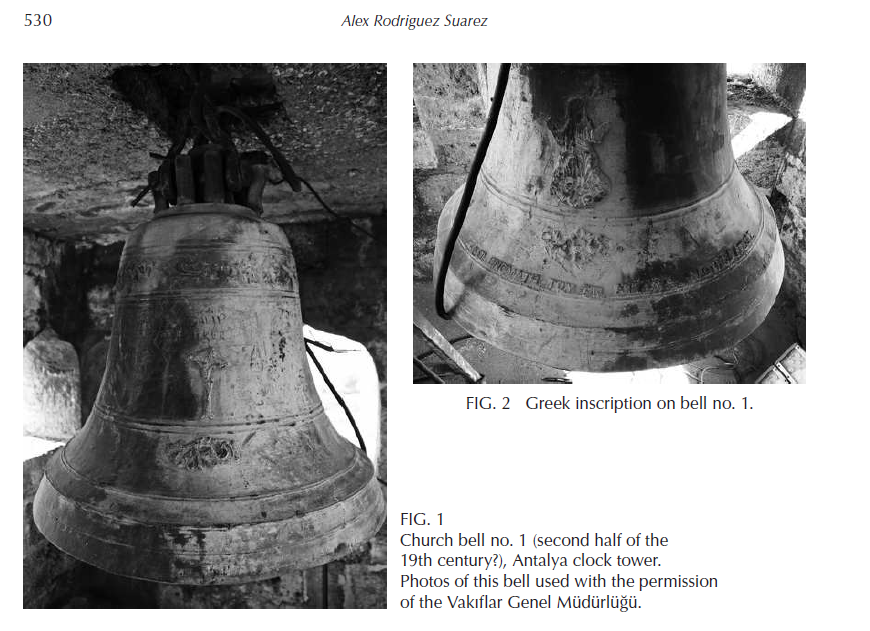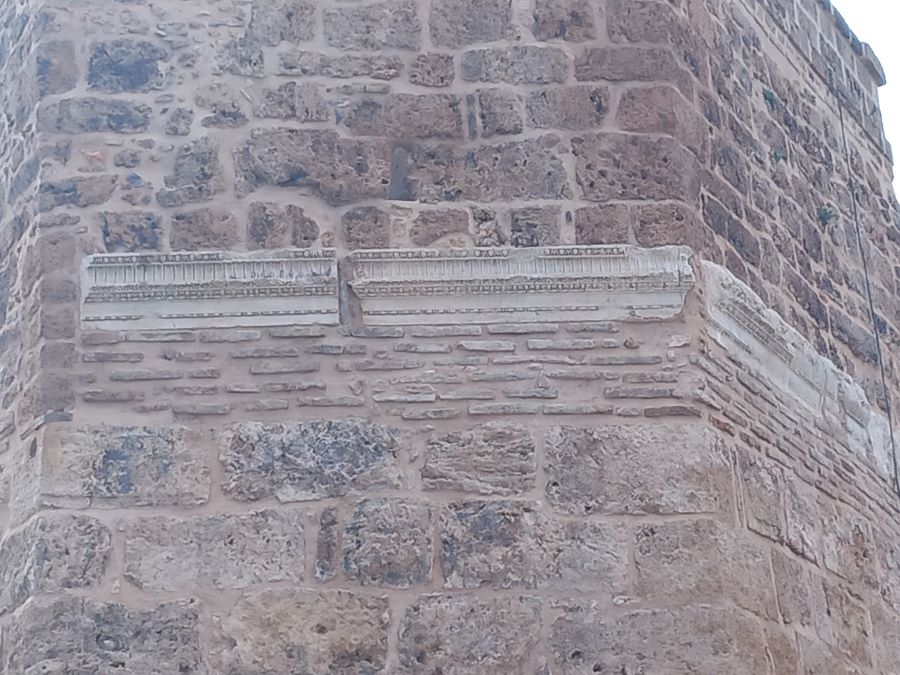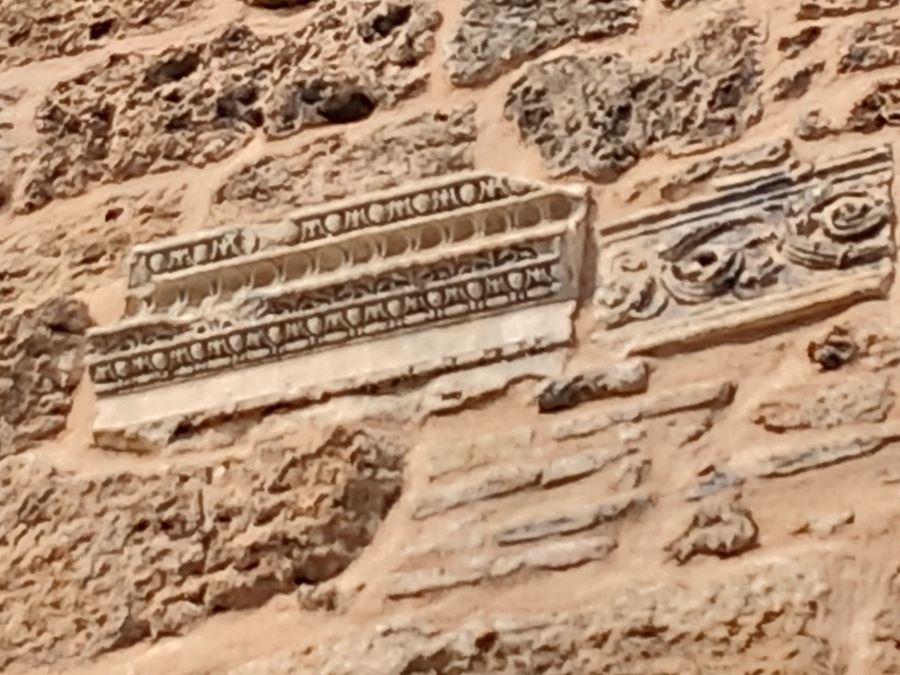The Antalya Clock Tower, recently renovated in 2024, centers in a prime location on the edge of the old city of Kaleici. The tower displays a mix of Seljuk, Ottoman, and Greek influences on the city. Within the tower are marble pieces, most likely from Byzantine buildings, which the Seljuks placed within the tower.
Muslim, Greek and Armenian Sections
In 1207 AD, the Seljuks gained control of the city hosting multiple religions and influences. So, about a decade later, they found a way to cultivate peace between the city’s inhabitants. They divided up Antalya into three parts. The Greek part encompassed the Yenikapi area to the hillside, giving way to the mixed or so-called Armenian neighborhood. Then, the road at the foot of this clock tower (Uzun Çarşı Sokak) starts the Muslim section. This leads to the Port, marking the divide including the old city’s western area. The Seljuk Walls, built in the 13th century, fortified former walls. When the Seljuks built a wall, they used the towers to protect and proclaim their dominance.
The tower’s lower section is Seljuk, while the upper section is Ottoman. The Turkish Republic added the recent dome. Strategically placed, it became the Clock Tower located near the Old Bazaar. Most likely between 1901 and 1921, the bell was placed into the tower to sound out the time. Sultan Abdul Hamid II (1876-1909) often promoted clock towers during his reign and in a few situations, former church bells were used in government Clock Towers.[1]Two Church Bells from Antalya: Traces of the Religious Soundscape of the Late Ottoman Period by Alex Rodriguez Suarez, ADALYA 23, 2020.
Antalya Clock Tower
This clock tower’s upper section was planned for in 1901 in honor of the 25th reign of the Ottoman Sultan Abdulhamid II. The tower sits upon a pentagon-shaped Seljuk bastion. The city history states, “It was first built in a square plan on a pentagonal bastion in the 9th century during the Byzantine Period and was turned into a clock tower during the Ottoman Empire Period.”[2]https://antalya.com.tr/en/discovery/kaleici/clock-tower This lookout tower was used to see coming ships into the harbor, especially during the Byzantine and Ottoman times, when piracy was rampant in this section of the Mediterranean.
The 100-year-plus history of the clocks takes a humorist twist since the parts were stolen from it over the years.[3]https://www.dha.com.tr/english/the-original-clock-of-the-historical-clock-tower-got-stolen-and-replaced-with-a-plastic-one-2081363 The current renovation sought to bring back some of the original parts. German Emperor Kaiser Wilhelm II gave this clock around the time that he gifted the German fountain placed in the Hippodrome in Istanbul.[4]Inaugurated on Jan. 28, 1901 The close relationship between Germany and the Ottomans highlighted the German allowance in 1898 for them to build the Istanbul to Bagdad railway. This railway runs north of Antalya through Konya.
The Bell in the Antalya Clock Tower
Within the clock section was the bell tower area.[5]https://www.hurriyetdailynews.com/dome-of-historical-clock-tower-in-place-after-90-years-178198 Previously, this section was a castle-like roof but now given a dome. The bell depicts Jesus on the cross, John the Baptist holding Scripture, and the Virgin Mary along with Greek writing.[6]https://www.travelguide.net/saat-kulesi/ This bell is now stored in the Antalya Archaeology Museum.[7]“During excavation works inside the tower, two lead pieces weighing 40 kilograms each, one responsible for the clock mechanism and the other for the bell at the tower’s summit, were … Continue reading

Two Church Bells from Antalya: Traces of the Religious Soundscape of the
Late Ottoman Period ALEX RODRIGUEZ SUAREZ found in ADALYA 23, 2020. (pdf)
The bell’s inscriptions depict a dedication to the church of the Virgin, which links the bell to the Panhagia Church (now the Alaaddin Mosque).[8]file:///C:/Users/Nakhati/Downloads/Two_Church_Bells_from_Antalya_Traces_of.pdf This church, abandoned by the Greek exchange in 1923, became the city’s archeology museum. Then, later, a mosque in 1958.[9]https://akmed.ku.edu.tr/en/inventory/alaaddin-mosque/ The Ottomans allowed bell ringing starting in 1856, which was based on the peace treaty of the Crimean War. During the late 19th century, churches constructed then had bell towers.[10]Near Taksim, Istanbul, many of these churches still exist with bells. This bell most likely moved from the archeology museum to this location sometime after 1923.
The Panhagia church site still shows a bell tower. The bell was most likely transported to this tower as a symbol of dominance over the Greek church. A key researcher said no clapper existed in 2020, so a clapper-less bell could have been placed here or placed to help with the sounding of the hour on the clock. No one thinks that this tower rang out like a church.
Lintels and Marbles in the Tower

The tower displays marble pieces, most likely from a former Byzantine building. These pieces are often placed into towers to show two things for the Seljuks: First, these marble pieces are from something that existed nearby, and secondly, placing them for display meant domination over that former religion. All these pieces connect to the Seljuk lower tower portions.
The Mehmet Pasa Mosque courtyard, just adjacent to this tower, displays former Byzantine Mosaics under glass. These mosaics show that an important Byzantine building existed at that location. Possibly, some of these pieces came from what was in that location.

Nearby things of Interest
In front of this tower is the Attalos statue of the founder of Antalya (erected in 2004), which is replicated with clothes from the original stored in the National Museum of Rome.[11]https://www.turpravda.org/places/tr/antalija/Pamjatnik_Attalu_II-s7757/r258582.html He ruled in Pergamon in the second century before Christ and expanded his rule to Antalya. Also, near the Clock Tower is the Old Bazaar, which does not present too much out of the ordinary. However, my walking tours into the old city give much insight into the Christian history found along the narrow streets of Kaleiçi.
References
| ↑1 | Two Church Bells from Antalya: Traces of the Religious Soundscape of the Late Ottoman Period by Alex Rodriguez Suarez, ADALYA 23, 2020. |
|---|---|
| ↑2 | https://antalya.com.tr/en/discovery/kaleici/clock-tower |
| ↑3 | https://www.dha.com.tr/english/the-original-clock-of-the-historical-clock-tower-got-stolen-and-replaced-with-a-plastic-one-2081363 |
| ↑4 | Inaugurated on Jan. 28, 1901 |
| ↑5 | https://www.hurriyetdailynews.com/dome-of-historical-clock-tower-in-place-after-90-years-178198 |
| ↑6 | https://www.travelguide.net/saat-kulesi/ |
| ↑7 | “During excavation works inside the tower, two lead pieces weighing 40 kilograms each, one responsible for the clock mechanism and the other for the bell at the tower’s summit, were unearthed. The bell and other components were handed over to the Antalya Museum for conservation.” https://www.hurriyetdailynews.com/historic-clock-replica-installed-at-famous-antalya-tower-190997 |
| ↑8 | file:///C:/Users/Nakhati/Downloads/Two_Church_Bells_from_Antalya_Traces_of.pdf |
| ↑9 | https://akmed.ku.edu.tr/en/inventory/alaaddin-mosque/ |
| ↑10 | Near Taksim, Istanbul, many of these churches still exist with bells. |
| ↑11 | https://www.turpravda.org/places/tr/antalija/Pamjatnik_Attalu_II-s7757/r258582.html |
Leave a Reply